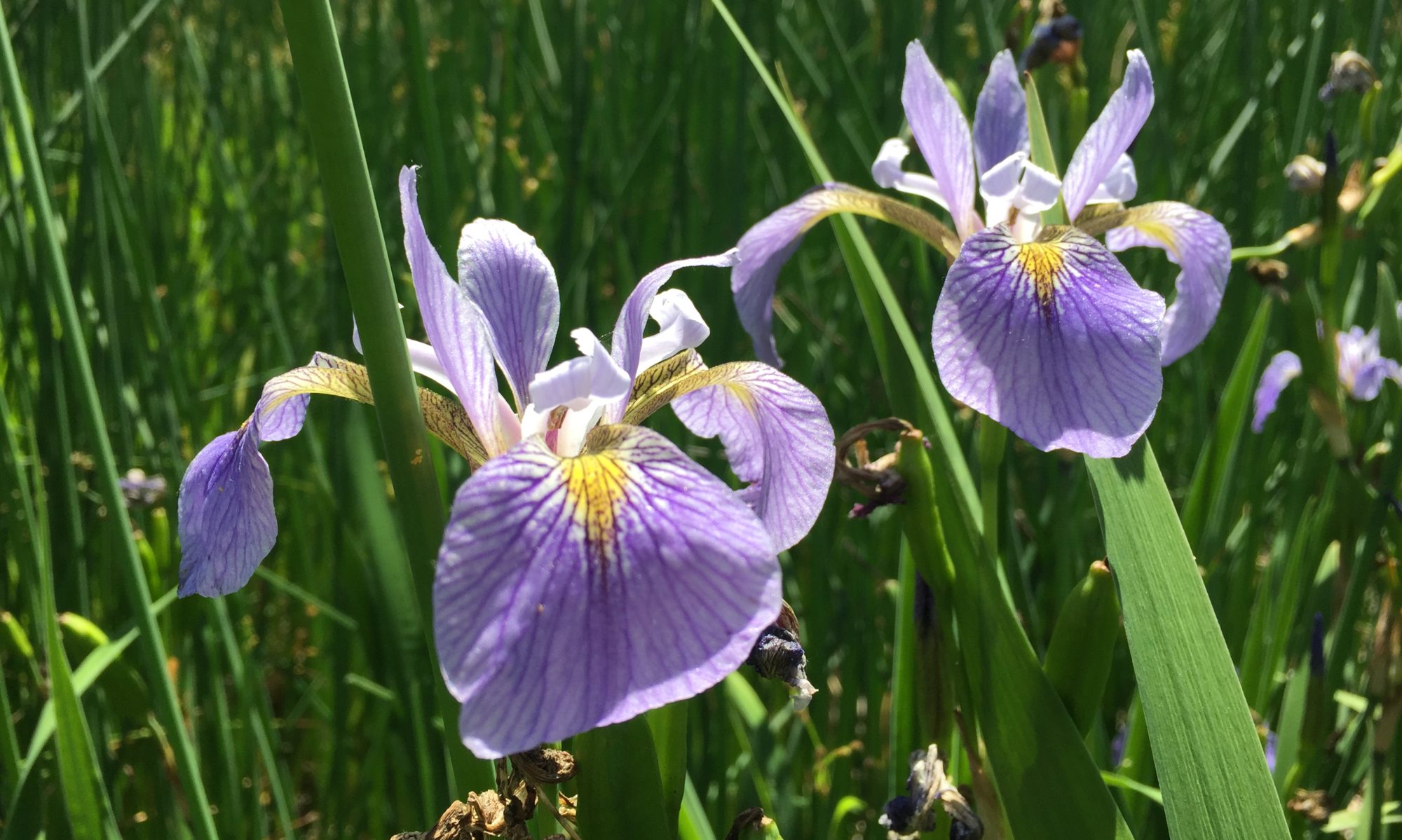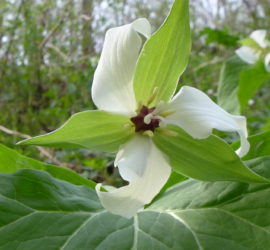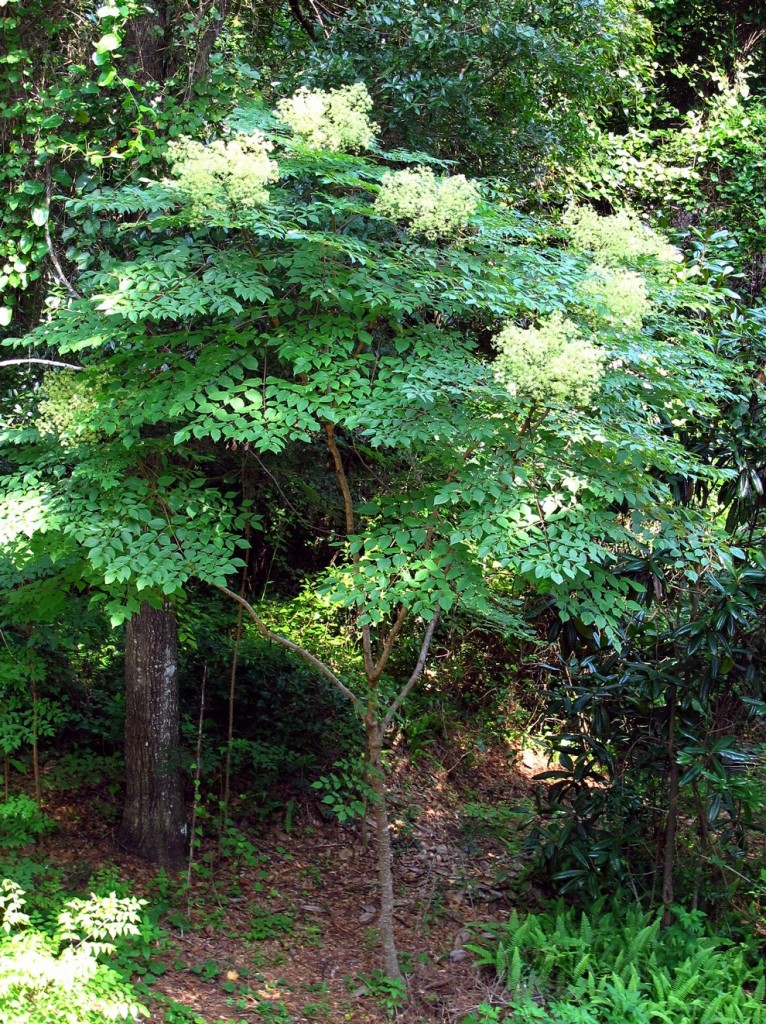THE JAPANESE ANGELICA TREE THREATENS THE FORESTS OF FAIRMOUNT PARK AND BEYOND. THIS IS A NOXIOUS INVASIVE WEED THAT CAN DO SERIOUS DAMAGE TO YOUR NATURAL AREA IN A SHORT PERIOD OF TIME. IT WILL RE-SEED ITSELF AGGRESSIVELY AND PROPAGATE WITH NUMEROUS SUCKERING ROOTS. Â THE UNDERSTORY NATIVE VEGETATION OF YOUR NATURAL FOREST WILL BE SEVERELY COMPROMISED OR ELIMINATED. Â THIS AGGRESSIVE Â INVADER MUST BE IDENTIFIED AND CONTROLLED
Aralia elata
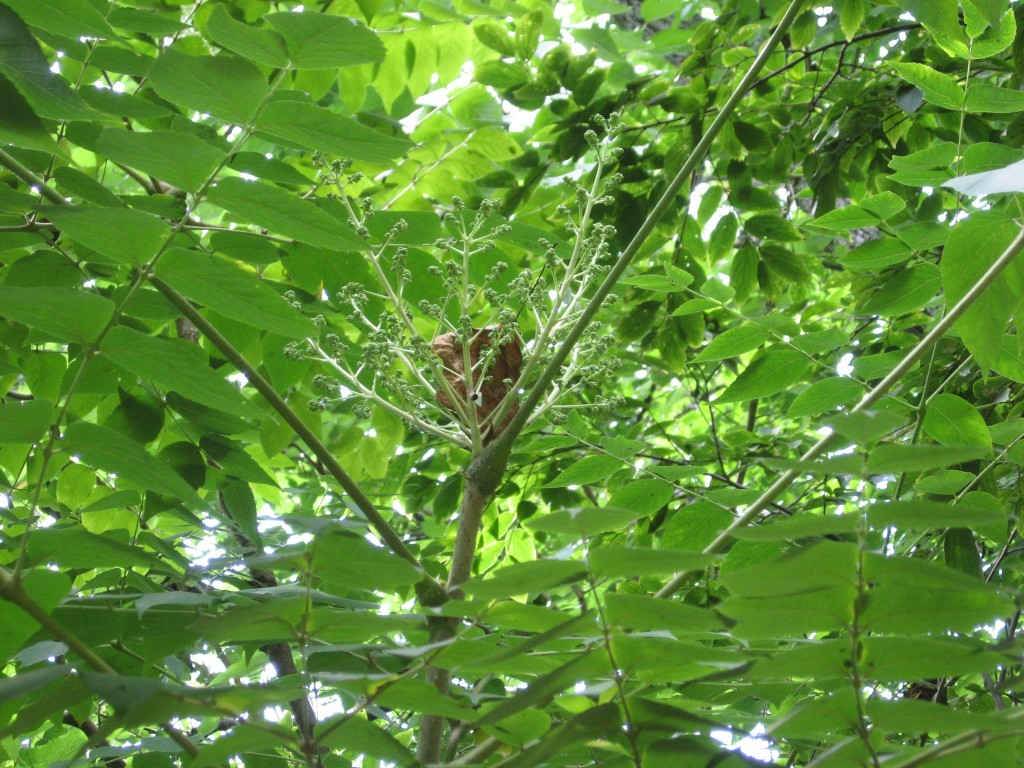
This post is a companion piece to our groundbreaking and controversial post The Japanese Angelica Tree Rapidly Invades Morris Park .  This is a tree that has spines all the way up its trunk and is a familiar sight in the Wissahickon Valley Park, West Fairmount Park and increasingly in The Cobbs Creek Watershed.
For many years this plant was considered to be a native.  There is a native plant very closely related that grows in another part of the state, and is not in this range. We have obtained photographs of this similar plant so we can show the differences and clear up any confusion about the native to America one and the invasive in Philadelphia one.  The picture above  and below show the flower of the invasive Japanese Angelica Tree which is often confused with a plant commonly called the Devils Walking Stick or Hercules club (Aralia spinosa), the native one that naturally grows in the western portion of Pennsylvania.  The differences in the structural characteristics of the flower is what is most distinguishing between the two very similar species.  The flowering structure of the invasive introduced Japanese Angelica Tree has a series of stems that radiate from a singular point, like a burst, such as fireworks for example.  At the end of the post we will show you the native Spinosa, which has a flower with a single central stalk, where the stems come off all the way along, up to the top, more like an oak tree.  This, believe it or not is the single most distinguishing characteristic that separates the two species. August through early September is the time to view this flowering structure.
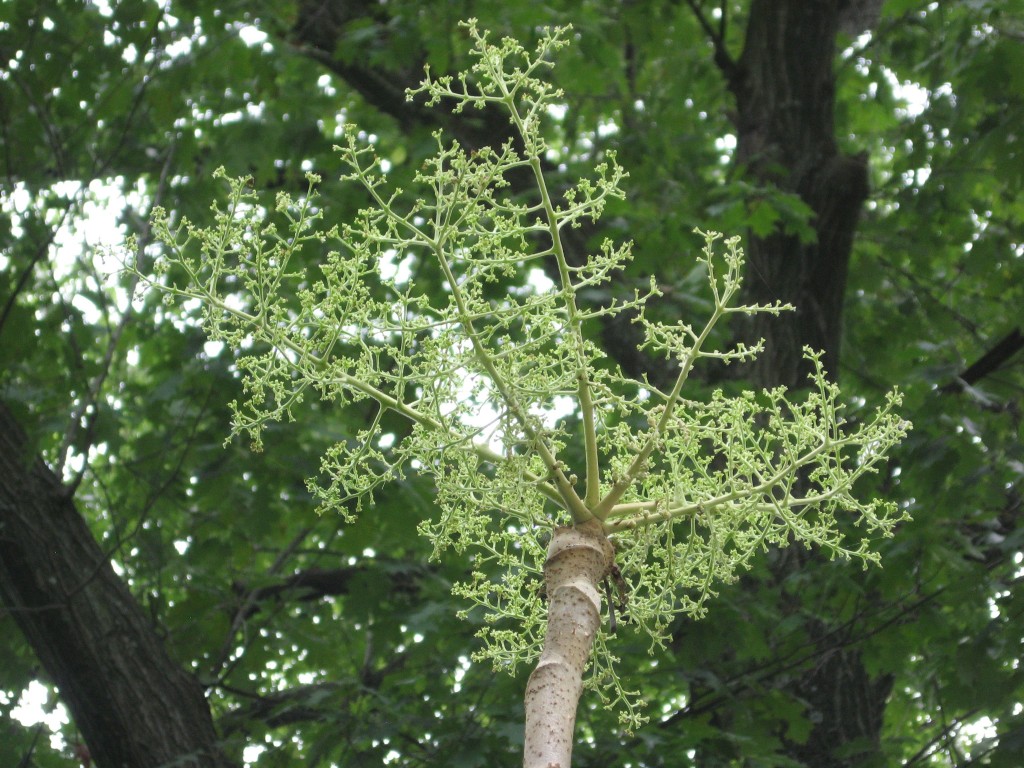
Above, The Japanese Angelica tree with its ‘fireworks’ flower habit, with multiple stems radiating from a single point.
The leaf of the Japanese Angelica tree is  bi-pinnately compound, with spikes at the axis along the central stem.  This plant is interesting to look at.
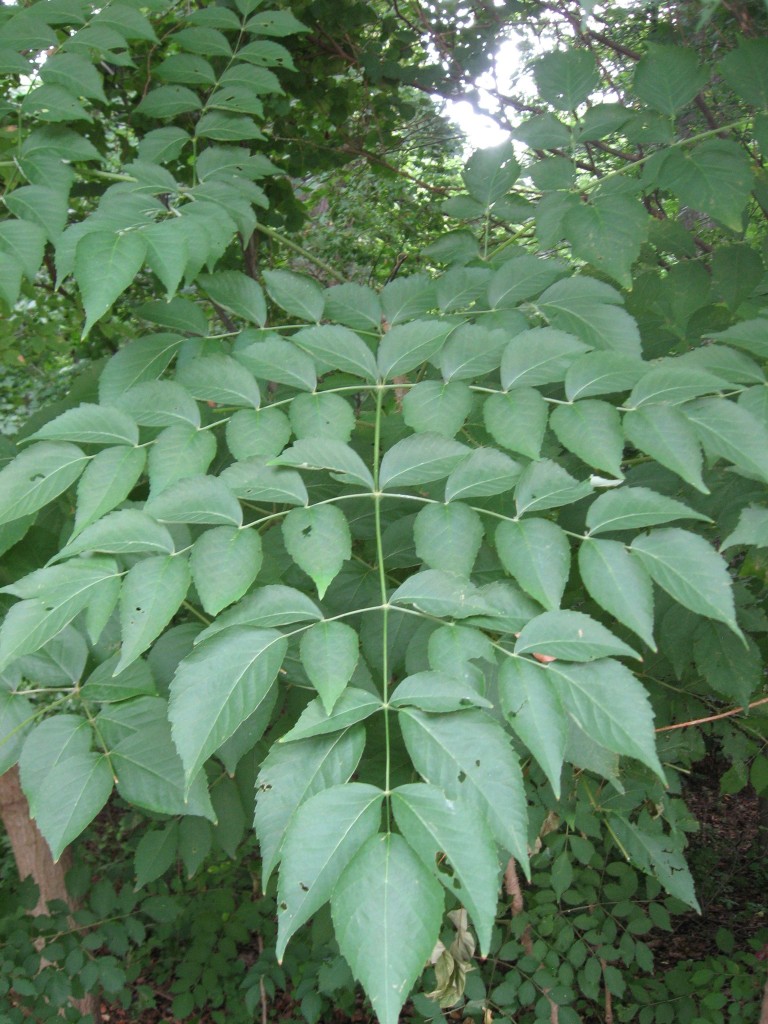
Below is a compromised picture of the seedling taken under extreme conditions. Â The young shoots are considered a delicacy in Japan and they are sauteed and eaten! One of these days, perhaps it should be tried out here.
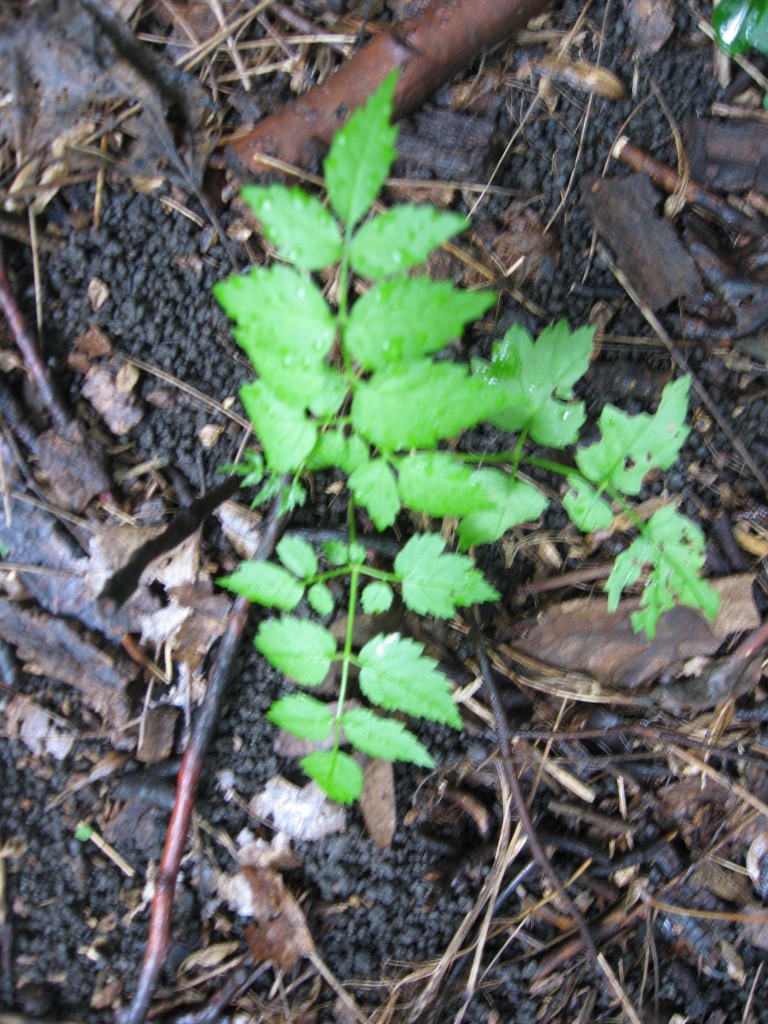
Below is a very clear picture of the flower of the invasive Japanese Angelica tree, where all of the stalks originate from a singular point. If you see an Aralia in your natural area, and it looks like this, start questioning its provenance.
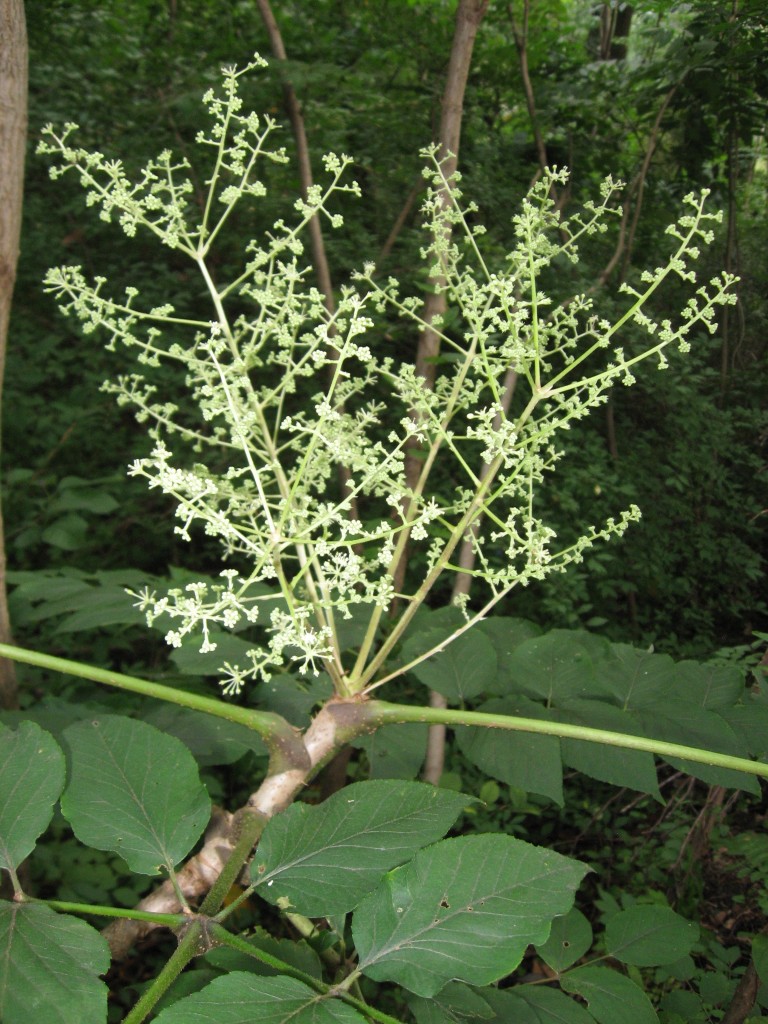
If you walk in the Wissahickon Valley park, this is a regular mid-to late summer viewing.  Those spiny trees with the large white flowers you see everywhere are a noxious weed we would be better off without.   There are no native to Western Pennsylvania Devils Walking Stick  (Aralia spinosa) in Fairmount Park.
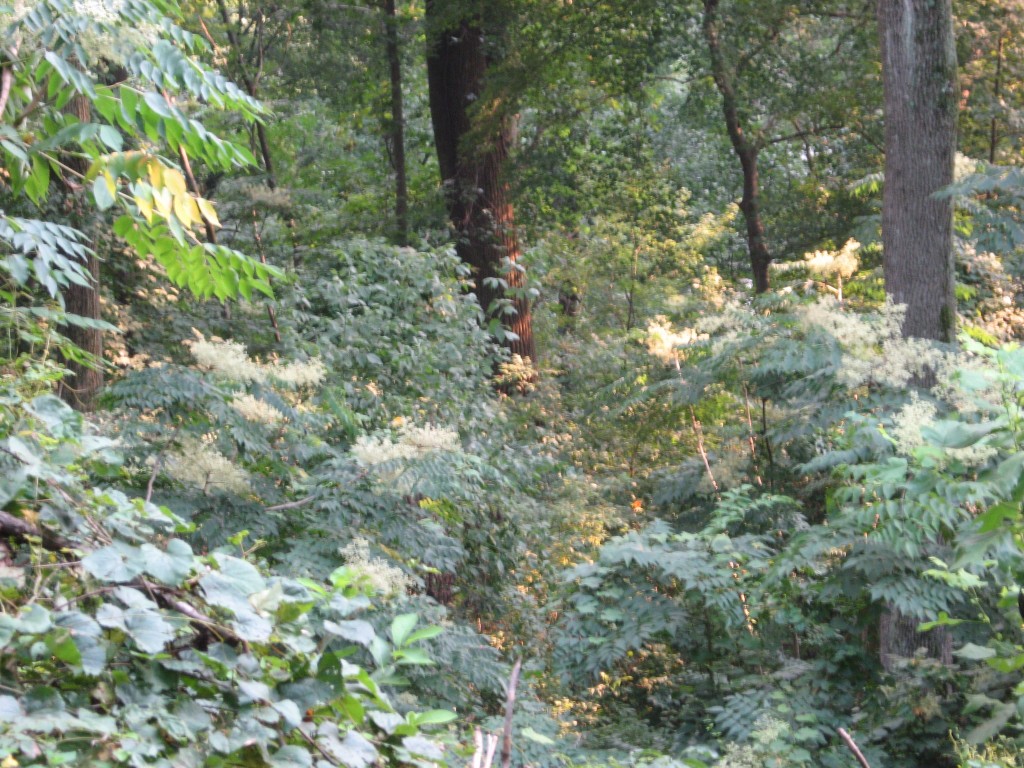
Here we show an approximate size of the seeds. Â The Japanese angelica tree is smaller than the native Devils Walking Stick, measuring in about 3 mm. Â The native to Western Pennsylvania Devil’s walking stick or Hercules’ Club measures in about 5 to 6 millimeters.
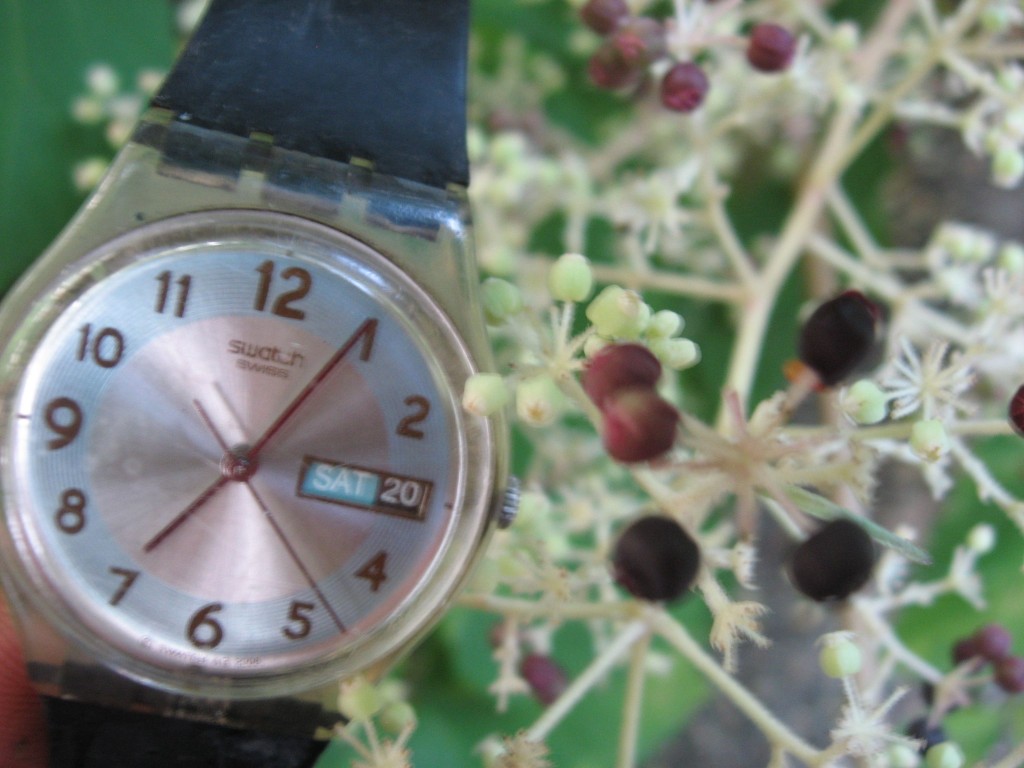
Aralia Spinosa
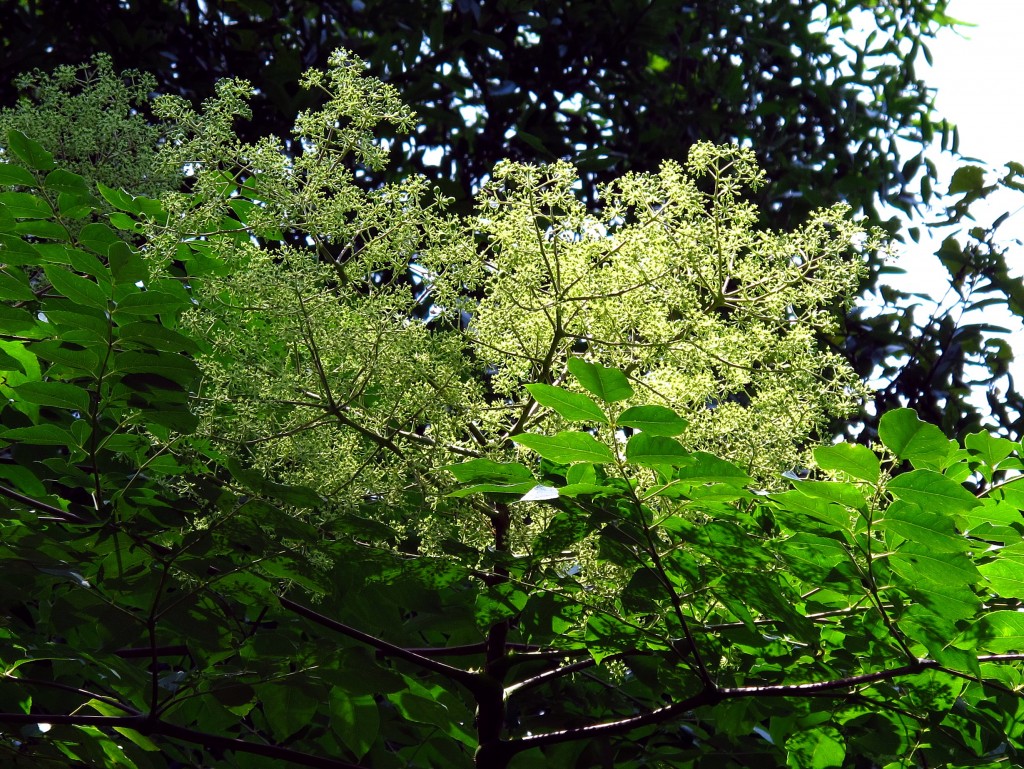
This tree, shown above, is native to North America, but only to certain regions. Outside of those regions, this plant is considered introduced. Â Here is the flower. Â Shown in the above picture is a central axis, where the flower spikes originate from all the way up the main spine.
It is interesting how two separate species, so closely related, behave so differently! Â One has been growing on this continent in certain areas for thousands of years and the other was growing on a different continent for thousands of years. Â When one was brought over just over 100 years ago and planted, it has thrived and become problematic. Â The native Aralia fits right in to its ecosystem and contributes. Â The invasive one is taking over, and destroying habitat, throwing woodland areas off balance. Â We do not know the full effects of this invasion. Â It is still localized in the Philadelphia area, however It has been sighted along Route 1 near the Maryland border. Â It is spreading rapidly, into New Jersey and LongIsland.
Native birds are eating the seeds of the invasive exotic Japanese Angelica tree.  While in the short-term, these birds may be obtaining nourishment  from  the seeds, the bigger picture most likely offers a more disturbing situation.  The birds end up spreading a species that has the potential to contribute to a  possible ecosystem collapse that could lead to the extinction of the bird species.  This ecosystem collapse could be in the form of a series of localized extirpations as the habitats are continuously compromised  by habitat loss over a series of years and events. However as time goes on, these localized extirpations where a species is eradicated from its home area permanently, will lead to widespread extirpation and possible extinction.
These are awfully strong scenerios, ecosystem collapse and extinction! What does that mean? When? Â Try to imagine the effects of environmental disturbances telegraphed into the centuries and millennia ahead. Â There is no saying for sure, but why take a chance? Â We humans ought to consider bringing our environmental disturbances down to a minimum. We must pass on these forests to the species that will grow out of our remains.
Seeing whole sections of Fairmount Park covered with invasive weeds with hardly a native plant in sight is the extirpation of an ecosystem. Â A parking lot is an extirpation. Â What was there before is now gone. Â The more areas extirpated around it, the more difficult it will be for it to recover.
In Philadelphia, we should be able to walk into a healthy forest and see what a Pennsylvania forest really is supposed to look like, right here in our 9000 acre Fairmount Park backyard. The Japanese angelica tree is making that pleasure even more distant.
- Hercules club, the native Aralia spinosa blooms in Tallahasee Florida, July 11, 2011
The Aralia spinosa growing in Tallahassee Florida. Â A native tree in its ecosystem. Â What a beauty!
Do you have The Japanese Angelica tree in your ecosystem? Â How about the Devils walking stick? Â Have you ever been confused about this tree? Â Do you think that “it’s all good”, and we should welcome alien plants as if they are part of some imagined grand scenario where they end up benefitting somebody or something somewhere in some unknown future time? Â Or do you think that the “its all good” theory is foolish gambling, unscientific, Â with no basis in observation and rationality? Â What should we do with the millions of specimens of non-native Japanese Angelica Trees in Fairmount Park? What do you think used to grow in their place and how would we find out? Â Do you think the tree is a harmful agent threatening the last remaining least disturbed natural areas of Fairmount Park?
From our adventures in many areas of Fairmount Park, From Chamounix Woods in West Park to the Wyndale Avenue Woods in Cobbs Creek, as well as right here in Morris Park, we believe that yes, this tree is a threat.
Please pipe up about your thoughts about this subject in our comments feature. Â Have you ever grabbed onto one with your bare hands going down a steep hill in the Wissahickon? Â Tell us about that experience!
